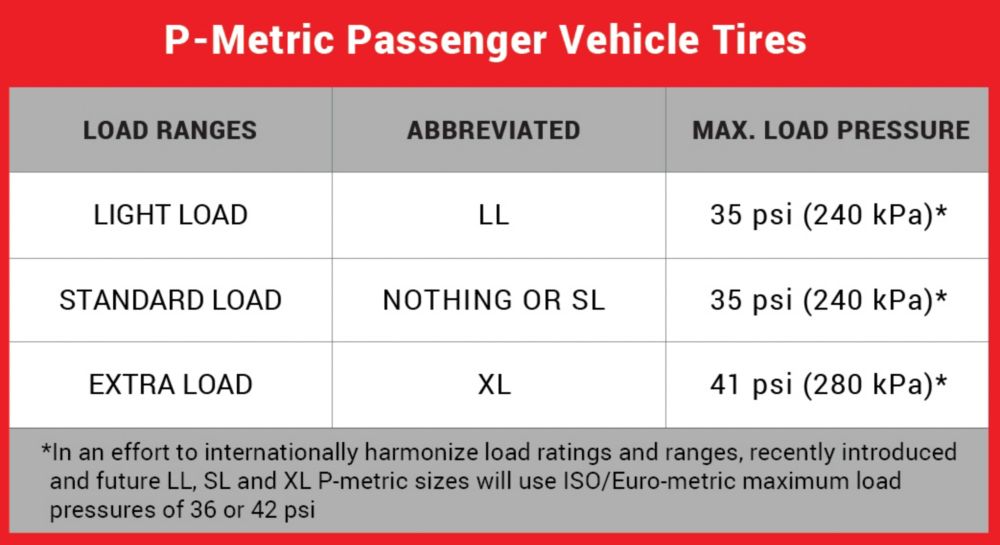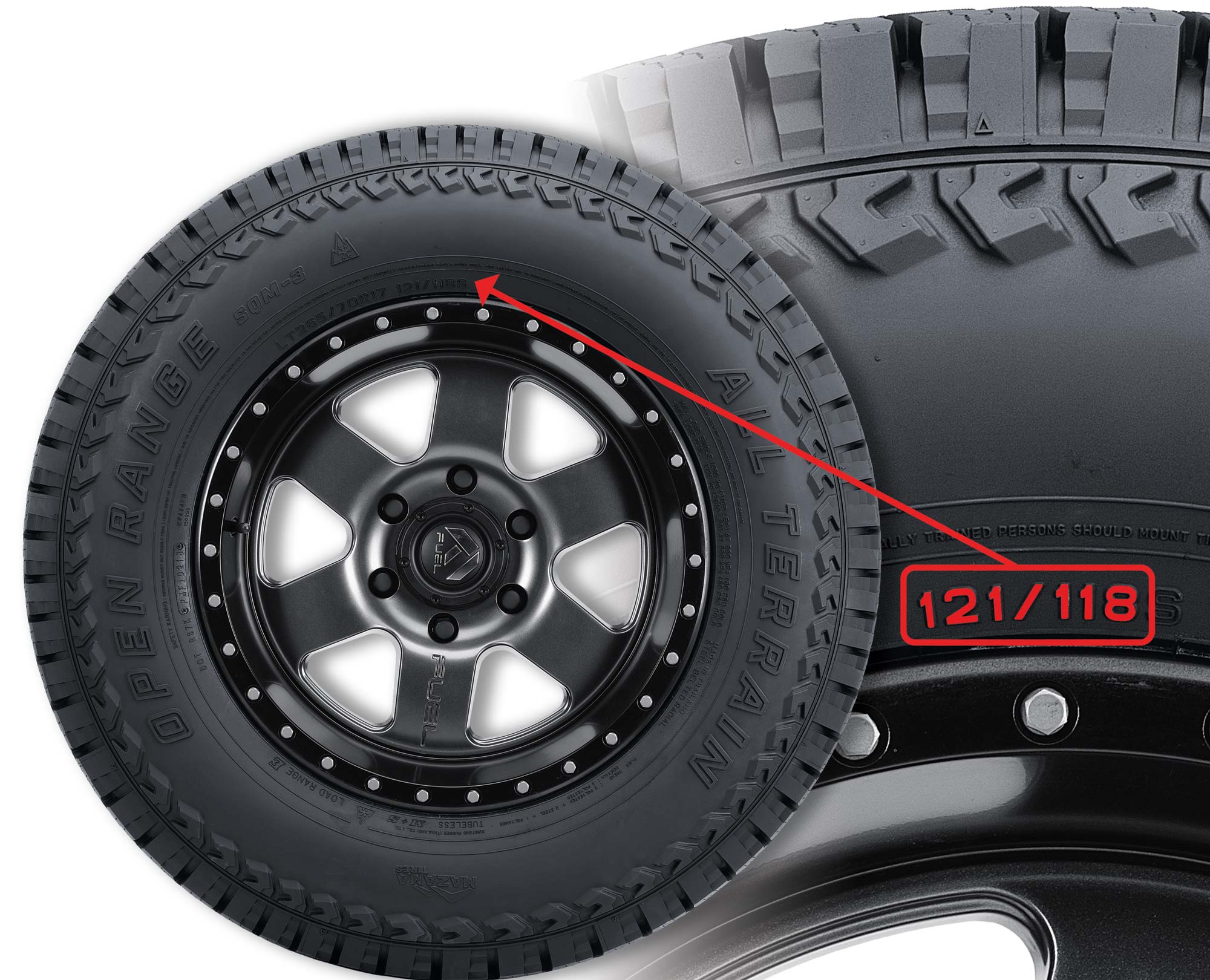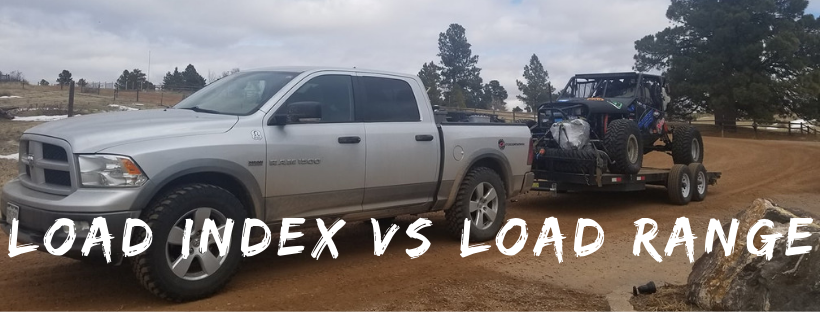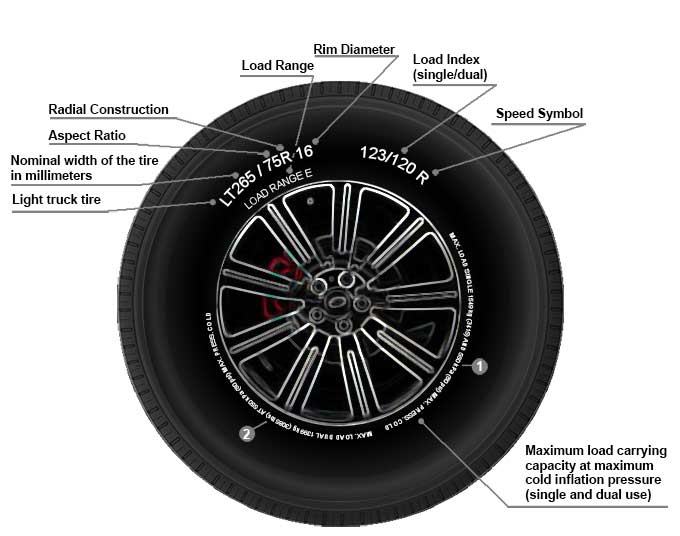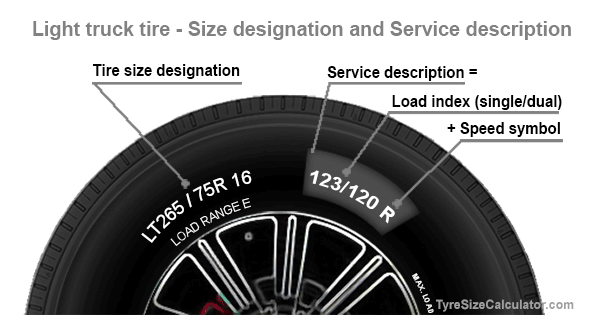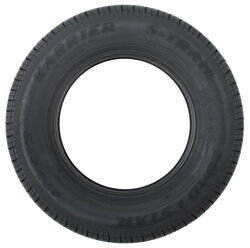Get down to eye level with your tires and you may notice the hieroglyphic like sequence of letters and numbers imprinted into each sidewall.
What does load range e stand for on a tire.
The load range f tire am10501 has a capacity of 3 960 pounds at 95 psi.
This is because light truck tires are often used on vehicles with dual rear wheels.
For example if a tire has a load index of 92 it can support 1 389 pounds at maximum air pressure.
Passenger tires are typically manufactured in one of three load ranges standard load light load and extra load or reinforced all of which could range from 2 to 4 ply tires.
A rating of e on the tire means the tire has a ply rating 10 and a load pressure of 80 psi.
As evidenced by its name the standard load range is the most common.
Lt metric lt flotation and lt numeric tires are branded with their load range load range e or lre or their ply rating 10 ply rated on their sidewalls and list their appropriate load range letter in their descriptions as lt245 75r 16 e 7 50r 15 d or 31x10 50r 15 c.
Referring to the tire load rating index chart below the number 94 translates to a load carrying capacity of 1477 pounds per tire.
Multiply that by four tires 4 x 1 389 5 556 pounds to get your car s maximum load carrying.
The information needed to identify the load range for tires is right there on the sidewall.
Light truck tires have two load indexes on the sidewall of the tire unlike passenger tires which only have one.
The tire load index lets you know the load carrying capacity of a tire.
The karrier radial tire load range e am10295 has a capacity of 3 640 pounds at 95 psi.
Going back to the audi example the car s service information is.
For example a light truck tire with a load index of 120 116 means a load capacity for a single tire of 3 086 pounds and a load capacity of 2 756 pounds for two tires.
In other words it s the amount of weight your tire can support safely.
94 indicates the load index.
Trailer tires should always be inflated to the maximum psi rating indicated on the tire.
The load index on a passenger car tire is a numerical code stipulating the maximum load mass or weight each tire can carry.
The difference between a load range e and load range f tire of the same size 235 85 16 is the weight capacity and pressure.
Many full sized pickups and cargo vans require load range e tires.
The numbers and letters at the end of the sequence that you see on your sidewall correspond to what s called the tire service description three or 4 figures that signify both the tire load index and the tire speed rating.
The tire load index rating communicates how many pounds a tire can safely carry.
For load range b tires etrto iso metric standards specify the load index rating at an inflation pressure of 36 psi 250 kpa table below while p metric standards measure the load capacity at an inflation pressure of 35 psi 240 kpa.
If your pickup truck or van is a 2500 or 3500 commonly called 3 4 ton or 1 ton your vehicle falls into this category.
The load range is identified by a letter of the alphabet usually from a to f which represents the ply rating and load pressure.
